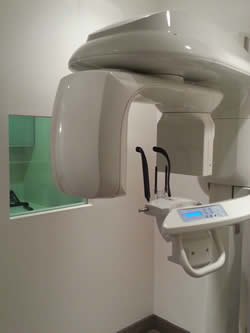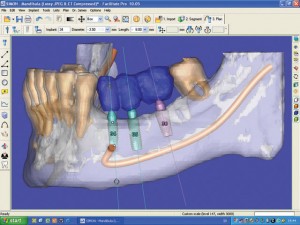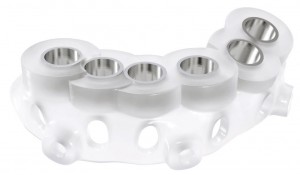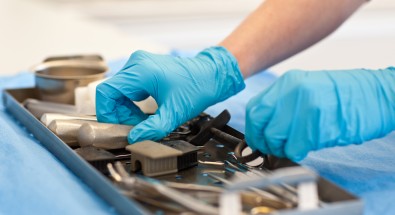Cone Beam CT Scan
Pacific Coast Oral and Maxillofacial Surgery is excited to offer a state-of-the-art 3D imaging modality known as cone beam computed tomography (CBCT). The Kodak 9300 CBCT is the most advanced maxillofacial imaging technique available today in the dental community.
Similar to traditional CT imaging but much lower radiation dose, the CBCT allows highly accurate 3-D radiographic images for the diagnosis and treatment related to oral surgery. The entire scan time is less than 15 seconds. This technology allows us to provide the best possible assessment and treatment for areas such as dental implants, TMJ analysis, airway assessment, jaw surgery, trauma, and pathologic conditions. The 3-D images created enable a level of anatomical accuracy and patient care not possible with traditional 2-D technologies.
 Cone Beam CT Scanner at PCOMS
Cone Beam CT Scanner at PCOMS
While we do not obtain a CBCT on every patient, we evaluate each of our patients on a individual basis to see if a CBCT will provide the information that would improve your care. With the addition of the Kodak 9300 CBCT technology to our office, you can be assured that our practice is committed to providing the most innovative, superior patient care possible.his instance.
The CS 9300 allow us more control in limiting radiation exposure to patients. The system also allows the user to collimate the imaging area – based on clinical needs – to further limit radiation exposure. In addition, images are taken in as little as 12 seconds depending on the chosen field of view, reducing both exposure time and blurred images.
CT GUIDED IMPLANT SURGERY

Dr. Aidelbaum and Dr. Chen can use the Cone Beam CT technology to fabricate a surgical guide to plan the exact position of the implants in your jawbone according to the future crown or denture to be made. This eliminates all the guesswork involved in determining what parts of the jawbone offer the best sites for implant placement. Our office has the latest Implant Planning Software 3-D Imaging to visualize the placement of dental implants in three dimensions. It can virtually create your exact future crown or denture on the computer software according to your exact bony and soft tissue anatomy. From this, we can then determine exacting in three dimensions how the implant must be placed. The software data is then sent to the lab and a surgical guide is generated.
This technology has revolutionized dental implant diagnosis and treatment. The computer-generated virtual treatment plan can be transferred accurately and predictably to the actual surgical treatment. The surgical guide allows the placement of dental implants, according to the virtual treatment plan. It also allows us the create the permanent restoration before the actual surgery so the restoration may be inserted on the day of the surgery.
The advantages of this technology includes:
- increased precision
- reduction in treatment time
- safety
- minimally invasive
- accurate implant placement
- faster recovery
- less discomfort

Virtual Surgical Planning
Dr. Aidelbaum has an interest in the use of the latest in digital imaging technology to plan and perform most of his surgical procedures including orthognathic surgery in order to maximize the final results and functional and esthetic outcome. He is amongst very few oral and maxillofacial surgeons nationwide who offers virtual surgical planning (VSP) orthognathic treatment.
We are very proud to offer such a technologically advanced service to our patients

